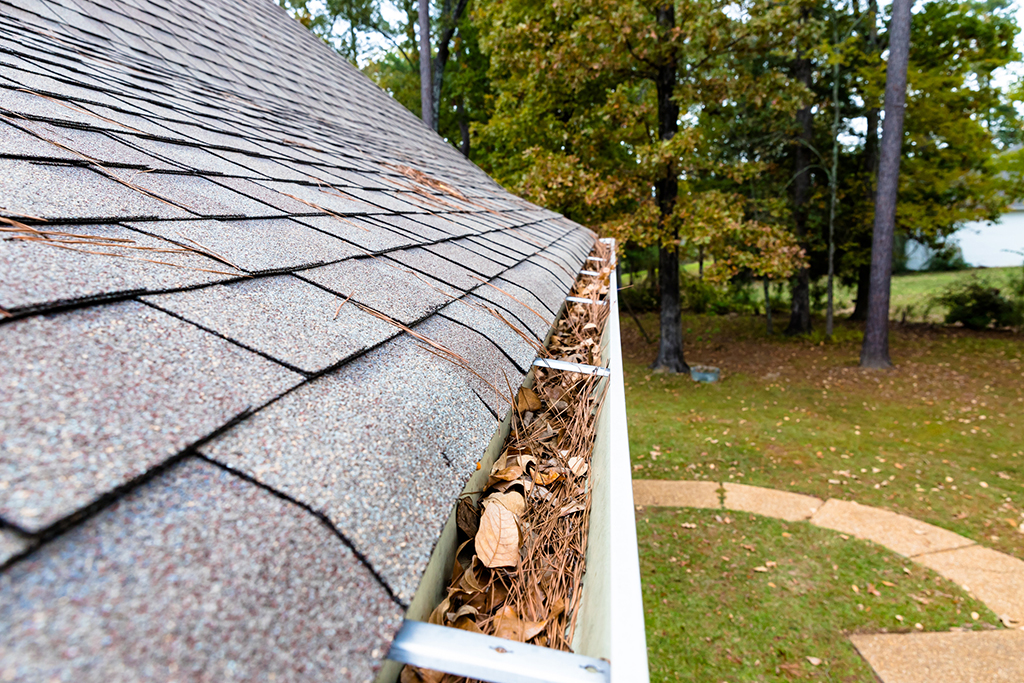A clogged roof drain (or obstructed roof drain) can lead to significant damage to your property if left unattended. Recognizing the signs of a clogged roof drain early is crucial for timely intervention.
A clogged or obstructed roof drain can lead to significant damage to your property if left unattended. Recognizing the signs of a clogged roof drain early is crucial for timely intervention. Here are some common indicators to watch for:
- Water ponding: One of the most apparent signs is water pooling on your roof. When water doesn't drain properly through the roof drains, it collects in low spots, causing puddles. These puddles can damage your roof's structure and eventually lead to leaks.
- Overflowing gutters: If you notice your gutters overflowing even during moderate rainfall, it's a strong indication of a clogged roof drain. Gutters are designed to redirect water away from your roof, and when they can't do so due to a clog, problems arise.
- Water stains: Interior water stains on your ceiling or walls are often a delayed consequence of a clogged roof drain. By the time you see these stains, significant damage may already have occurred.
- Dripping sounds: During heavy rainfall, if you hear water dripping from unexpected places in your home, it could be due to a clogged drain causing water to seep into your living spaces.
- Visible debris: Sometimes, you might see debris or vegetation protruding from the roof drain or gutter. This visual cue suggests that the drain is blocked and needs attention. ▼

Common Causes of Roof Drain Clogs
Understanding the root causes of roof drain clogs is the first step in effective maintenance. Several factors contribute to clogs:
- Leaves and debris: The most prevalent culprits are fallen leaves, branches, and debris that accumulate on the roof over time. These materials can easily enter roof drains and obstruct water flow.
- Dirt and sediment: Wind-blown dirt, sand, and sediment can find their way into roof drains, gradually building up and causing blockages.
- Bird nests: Birds often seek refuge on roofs and can create nests inside roof drains, hindering proper drainage.
- Ice and snow: In colder climates, ice dams and frozen debris can block roof drains, especially during winter months. Regular inspection is essential to prevent ice-related clogs.
- Algae and moss: Algae and moss can grow on your roof and in roof drains, creating a slimy barrier that impedes water flow.
How to Unclog a Roof Drain

Unclogging a roof drain may seem daunting, but with the right tools and techniques, it's a manageable task. Here's a step-by-step guide:
Step 1: Safety first
Before you begin, prioritize safety. Roof work can be hazardous, so make sure you take the following precautions:
- Wear appropriate personal protective equipment (PPE), including work gloves to protect your hands and safety glasses to shield your eyes from debris.
- Ensure that your ladder is in good condition and properly secured on a level surface. It should extend at least three feet beyond the roof's edge for safe access.
- Let someone know that you'll be working on the roof, in case of an emergency.
Step 2: Inspection
Begin by carefully inspecting your roof and gutter system. The objective is to identify the exact location of the clogged roof drain. Here's what to look for:
- Examine the entire roof surface for any visible debris or blockages around the drain.
- Pay close attention to the area around the drain, as debris often accumulates there.
- If your property has multiple roof drains, check each one separately.
Step 3: Remove debris manually
Using a scoop or trowel, remove any visible debris from the roof and the vicinity of the roof drain. Here are some additional tips:
- Be thorough in your removal, as even small pieces of debris can contribute to clogs.
- If the clog is within reach, gently scoop out any leaves, twigs, or other obstructions from the drain opening.
- Dispose of the debris in a bucket or bag to prevent it from falling back onto the roof.
Step 4: Check the downspouts
Don't forget to inspect the downspouts connected to the roof drain, as they can also become clogged. Here's what to do:
- Run your hand along the inside of the downspout to check for blockages or build-up.
- If you encounter resistance or notice any obstructions, you may need to clear the downspout as well.
Step 5: Use a plumber's snake or auger
If the clog persists after manual removal of visible debris, it's time to use a plumber's snake or auger. Here's how to do it:
- Insert the plumber's snake or auger into the roof drain opening.
- Rotate the tool clockwise while gently pushing it further into the drain.
- Continue to feed the snake or auger into the drain until you encounter resistance.
- When you feel resistance, carefully work the tool to break up and dislodge the clog.
- Avoid excessive force to prevent damage to the drain or the roof.
Step 6: Flush with water
After removing debris and using the plumber's snake, it's crucial to test the drain with water to ensure it's clear. Here's what you need to do:
- Attach a garden hose with a nozzle to a nearby water source.
- Insert the hose into the roof drain opening.
- Turn on the water supply at a low to moderate pressure.
- Allow the water to flow through the drain, flushing out any remaining debris.
- Observe the water flow through the gutters to ensure it's unobstructed.
Step 7: Test drainage
With the garden hose still running, observe how water flows through the roof drain and gutters. This step confirms that the clog has been successfully cleared:
- Ensure that water is flowing freely without any signs of backup or pooling.
- Pay attention to any unusual noises or gurgling sounds, which could indicate a partially cleared clog that may require further attention.
- By following these detailed steps, you can effectively and safely unclog your roof drain, ensuring that your drainage system functions optimally and protecting your property from potential water damage.
Clean Your Roof Drain: Preventative Maintenance
Regular maintenance of your roof drain is essential for preventing future clogs and safeguarding your property.
To effectively avoid clogged drains, it's crucial to adhere to a proactive cleaning schedule. Start by inspecting your roof and gutters at least twice a year, ideally before and after the rainy season, to assess the presence of debris or potential clogs.
Additionally, keep a vigilant eye on your roof and gutters after heavy storms or strong winds, as these conditions can accelerate debris accumulation. By consistently monitoring and cleaning your roof drain as needed, you can maintain optimal drainage and avoid costly repairs down the road.
What’s next?
In this comprehensive guide, we've covered the importance of recognizing signs of clogged roof drains, the common causes of such clogs, and detailed step-by-step instructions for safely unclogging them.
We've emphasized the significance of regular preventative roof drain maintenance, including when and how often to clean your roof drain. By following these guidelines, you can protect your property from water damage, extend the lifespan of your roofing system, and ensure efficient drainage year-round. Regular roof drain maintenance is an investment in the long-term health of your property, providing peace of mind and saving you from potential headaches and expenses associated with clogged drains.

